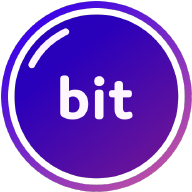What is @material-ui/core?
The @material-ui/core package is a React component library that implements Google's Material Design. It provides a robust, customizable, and accessible collection of components that can be used to build a wide range of user interfaces, from simple buttons and text fields to complex navigation and layout patterns.
What are @material-ui/core's main functionalities?
Buttons
This feature allows developers to use Material Design styled buttons in their applications, with various customization options such as colors, variants, and sizes.
import React from 'react';
import Button from '@material-ui/core/Button';
function App() {
return <Button variant='contained' color='primary'>Hello World</Button>;
}
Text Fields
Text Fields are used for inputting text data. The @material-ui/core library provides a Material Design styled TextField component with various styles and customization options.
import React from 'react';
import TextField from '@material-ui/core/TextField';
function App() {
return <TextField label='Outlined' variant='outlined' />;
}
Grid Layout
The Grid component allows for the implementation of responsive layouts. It uses a 12-column grid system and supports various configuration options for alignment, spacing, and more.
import React from 'react';
import Grid from '@material-ui/core/Grid';
function App() {
return (
<Grid container spacing={3}>
<Grid item xs={12}>
<div>Full-width</div>
</Grid>
<Grid item xs={6}>
<div>Half-width</div>
</Grid>
</Grid>
);
}
Other packages similar to @material-ui/core
antd
Ant Design (antd) is a design system and React UI library that offers a high-quality set of components. It is similar to @material-ui/core in providing a comprehensive suite of UI components but follows the Ant Design specifications. Ant Design tends to have a more enterprise look and feel compared to Material-UI's more general Material Design approach.
react-bootstrap
React-Bootstrap is a React component library that rebuilds the Bootstrap components with React. It offers similar functionalities to @material-ui/core in terms of providing a set of ready-to-use components designed according to the Bootstrap framework. While @material-ui/core is based on Material Design, React-Bootstrap is based on Bootstrap, offering a different design philosophy and aesthetic.
chakra-ui
Chakra UI is a simple, modular, and accessible component library that gives you the building blocks to build your React applications. It is similar to @material-ui/core in providing a wide range of components but focuses more on simplicity and accessibility. Chakra UI also offers a more modern and minimalistic design compared to the Material Design of @material-ui/core.

Material-UI
MUI v5 is out! ✨ Check out the latest documentation here.
Installation
Material-UI is available as an npm package.
// with npm
npm install @material-ui/core
// with yarn
yarn add @material-ui/core
Head to the v4 documentation for more details.
Older versions
Diamond 💎


Diamond Sponsors are those who have pledged $1,500/month or more to Material-UI.
Gold 🏆
via Patreon



via OpenCollective



Direct

Gold Sponsors are those who have pledged $500/month or more to Material-UI.
There is more!
See the full list of our backers.
Usage
Here is a quick example to get you started, it's all you need:
import React from 'react';
import ReactDOM from 'react-dom';
import Button from '@material-ui/core/Button';
function App() {
return <Button variant="contained">Hello World</Button>;
}
ReactDOM.render(<App />, document.querySelector('#app'));
Yes, it's really all you need to get started as you can see in this live and interactive demo:

Questions
For how-to questions and other non-issues,
please use StackOverflow instead of GitHub issues.
There is a StackOverflow tag called "material-ui" that you can use to tag your questions.
Examples
Are you looking for an example project to get started?
We host some.
Documentation
Check out our documentation website.
Premium Themes
You can find complete templates & themes in the Material-UI store.
Contributing
Read the contributing guide to learn about our development process, how to propose bugfixes and improvements, and how to build and test your changes to Material-UI.
Notice that contributions go far beyond pull requests and commits.
Although we love giving you the opportunity to put your stamp on Material-UI, we also are thrilled to receive a variety of other contributions.
Changelog
If you have recently updated, please read the changelog for details of what has changed.
Roadmap
The future plans and high priority features and enhancements can be found in the roadmap file.
License
This project is licensed under the terms of the
MIT license.
These great services sponsor Material-UI's core infrastructure:

GitHub allows us to host the Git repository.

CircleCI allows us to run the test suite.

Netlify allows us to distribute the documentation.

CrowdIn allows us to translate the documentation.

BrowserStack allows us to test in real browsers.

CodeCov allows us to monitor the test coverage.
























